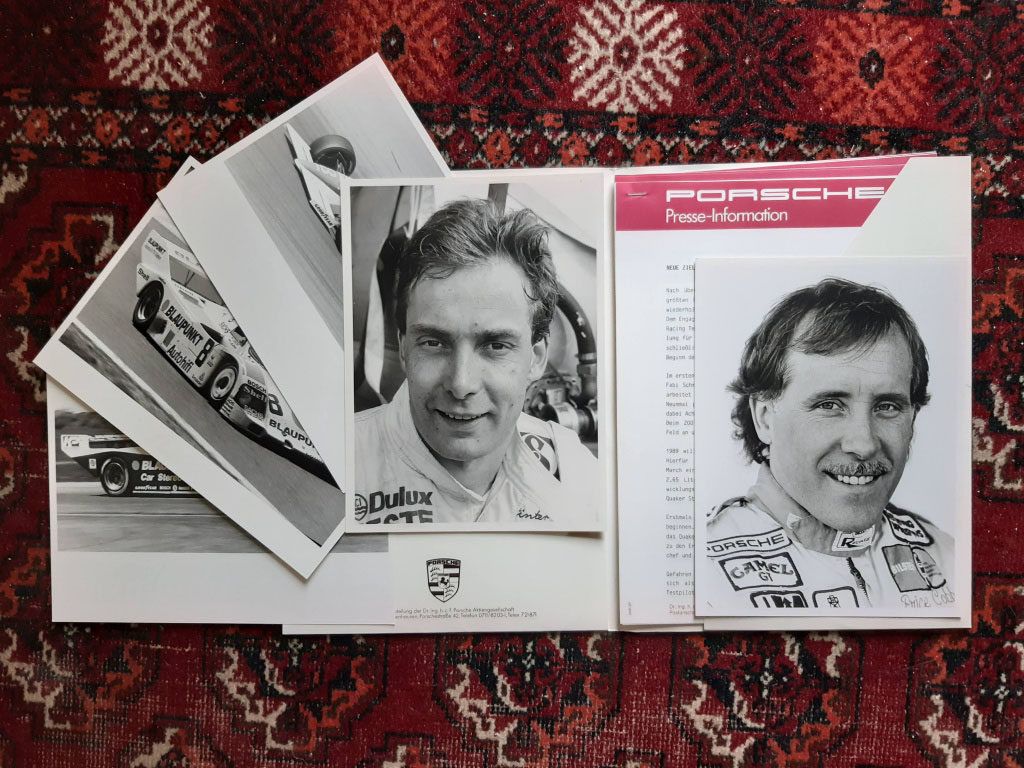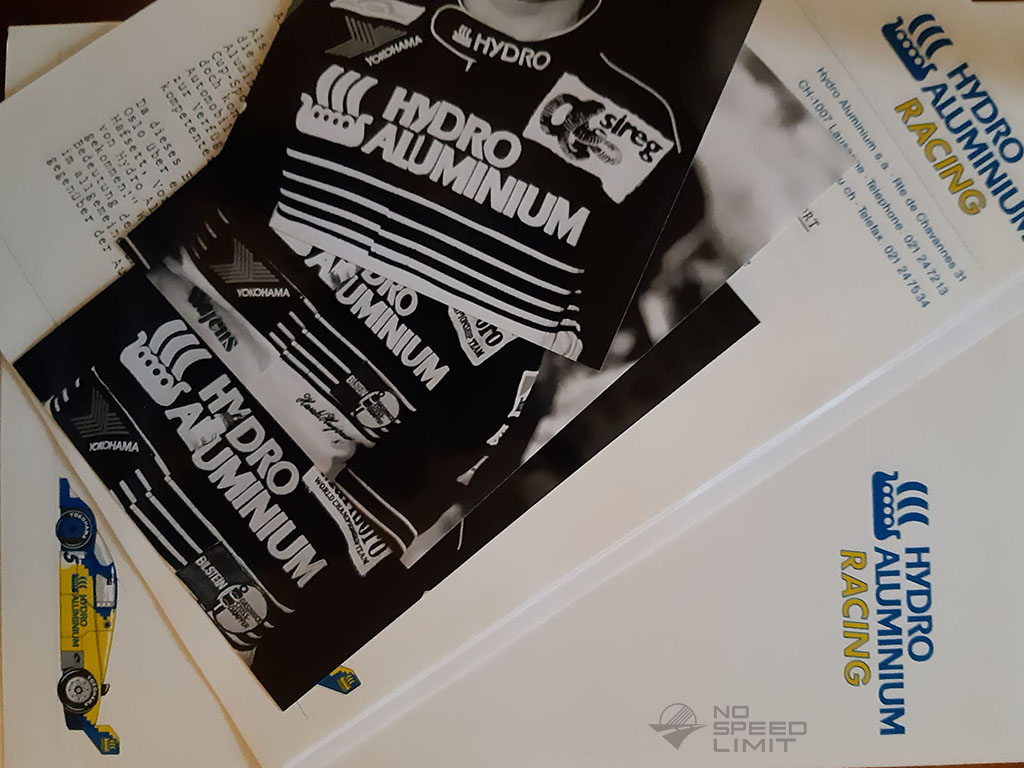.jpg)
Carrera 2 Cup 1990
Note for the reader: original material in German, translation by NSL with the help of crappy Google Translate

Ladies and Gentlemen,
as a member of the Board of Management you have many duties and obligations. There are pleasant and less pleasant ones. To welcome you here in this circle and to be able to celebrate with you is undoubtedly one of the pleasant duties.
I would like to give you all a warm welcome to this Porsche racing family celebration and I am particularly pleased that I am now a part of it.
As you know, one of my tasks since October 1st, 1988 is to steer future racing activities in the right direction. This is undoubtedly not the most important, but it is a very important task for Porsche. Of course I'm not at home in the racing scene yet. But maybe that is exactly my strength and I can initiate the right course for the future with an open mind and without obligations.
I have always been fascinated by racing and everything that goes with it. As early as 1966 I drove to Le Mans with three friends in a night and fog action, in order to spend another night on the Cannstatter Wasen after this long weekend, because the race at that time had been postponed from June to September. And then of course I played a key role in two 1000 km races at the Nürburgring. I was allowed to open the fuel tap on the pit roof to refuel. With this move, my presence also made sense, and I also enjoyed the best place to watch what was going on in the boxes.
Customer sport has always played a major role for Porsche, and that is why I am particularly pleased that I am able to welcome you, our loyal, committed customers, here this evening, to get to know you and to get to know each other.
Last year you won no less than
In anticipation of the subsequent award ceremony, I would like to mention some outstanding successes now.
At the International Interserie, the permanent team won the team championship and Jochen Dauer himself won the driver’s championship in a Porsche 962C.
The IMSA-GTP Manufacturers Championship went to Porsche for the fourth time in a row, just 1 point ahead of Nissan.
The team championship of the German Würth Super Cup was decided by the Joest team after a dramatic final run on the Nürburgring.
Further manufacturers' championships won by Porsche were in France, England and Japan as well as drivers' championships in Japan, Sweden, England, in the USA, Germany and even on the Ile de Réunion.
The brand cups for 944 Turbo vehicles were held this year in France, Canada, South Africa and Germany. Roland Asch won the German Cup ahead of Georg Pacher and Rüdiger Schmitt.
In the FISA sports prototype championship of Group C vehicles for teams, 3rd place went to the Joest team. The drivers of this team also took the first two places in the 1988 Porsche Cup.
The winner was John Winter ahead of Bob Wollek. 3rd place went to Kris Nissen in the Kremer-Porsche 962 C.
We are happy that he is with us this evening after his serious accident in Japan and we wish him a good and speedy recovery.
Price Cobb won the American Porsche Cup in a Porsche 962 ahead of Fred Baker in the 944 Turbo and David Finch in the 944 S.
The interaction between the Porsche factory, the Porsche factory outings and the customers was particularly important in the past, and that's why At this point, I would also like to say something about our company outreach, about our Porsche company motorsport.
The works team started in 1988 in the world championship races in Le Mans and Fuji as well as in the 5 races of the Würth Super Cup. In Le Mans, Stuck / Bell / Ludwig came second, victory went to Jaguar after 7 consecutive Porsche years. In Japan, too, only a minor thing prevented a possible victory.
In the Super Cup, works team and works driver Hans-Joachim Stuck took 3rd place in the final ranking.
With these outings, the factory finally withdrew from endurance racing with the 962 C. The latest developments and all material were given to the customer sports department.
What will Porsche motorsport look like next year and in the future?
The next year is relatively easy. All sports activities focus on the CART series. I myself was in Miami for the last race of the CART series and saw that the Quaker State Porsche Team has caught up with the top 4 teams after the tough year 1988.
Over the winter a new chassis will be developed in cooperation with March, the engine will be revised and with our new team manager Derrick Walker, chief engineer Tony Cicale and Teo Fabi we are sure that we will be really competitive in 1989.
The future for Porsche racing is simple and yet complicated. After the decision of the sports authorities to fix the 3.5 liter naturally aspirated engine for Group C for 10 years and the possibility of using this engine in Formula 1, it is clear: Porsche needs a 3.5 liter naturally aspirated engine if sport continues to be active should be made, and Porsche is unthinkable without sport.
The use of this engine will, however, depend on the willingness of potential sponsors and the size of the sponsorship amounts. These possible uses should be lashed down by the middle of next year.
The 944 Turbo Cup, which is very popular with drivers and spectators, will continue next year. For us, this racing series is even stronger than the other series as a test field for future series developments.
Our customer sports department will continue to be represented for the teams on the racetracks in order to help with spare parts and technical know-how on site. A further development of the 962 for the prototype world championship or the IMSA-GTP series, however, will not take place from the factory.
In conclusion, ladies and gentlemen, something on my own behalf. The Porsche development center has been reorganized to cope with the tasks ahead of us. You have already taken partial information from the press. Further determinations have now been made.
In order to be able to use the knowledge gained in racing intensively for series development and, on the other hand, to stimulate racing engines and racing chassis technology, the racing department and the research department are being merged. This gives us greater capacity and efficiency for racing activities, and on the other hand it is better ensured that these things can also be implemented in series production.
This department "Research and Sport" will be headed by Mr. Helmut Flegl.
Mr. Peter Falk, who previously headed the development of racing and sports vehicles, will in future be responsible for chassis development at Porsche. I would like to thank you, Mr. Falk, for your many years of dedicated commitment to Porsche racing and I am sure that the countless, fantastic victories that have been achieved under your direction, from your team or from customer, will not be forgotten. In sport there is the catchphrase "They never come back". But many athletes have shown that they could come back, and I can well imagine that this is not Mr. Falk's final farewell to racing.
Porsche remains a benchmark
Whether in the professional or the numerous American amateur classes, the Porsche sports cars made large starter fields in the 1988 season and remained a benchmark.
This year, there was a heartbeat final around the outcome of the popular American sports car championship IMSA. Before the 13th and last IMSA run in 1988, the Briton Geoff Brabham in a Nissan was already the winner of the drivers' classification, but the decision on the brand and manufacturer classification, which would have a bearing on the image, was still pending. At that IMSA race, Brabham, who was under great pressure, slipped off the track and scrapped the Nissan; Porsche works driver Klaus Ludwig, who drove the private Bayside Porsche in the IMSA series, achieved second place overall with a tactical feat. Ludwig's Porsche thus secured the 27th IMSA manufacturers' championship - one point ahead of Nissan. It was the fourth IMSA GTP triumph of the Type 962 in its fourth year. In the championship itself, the reliable Porsche 962 managed three victories of the season against the new designs from Jaguar and Nissan.
Porsche power in off-road too
In Europe, Porsche sports cars are not permitted or wanted in the newly created and near-series Group A; in the USA, Porsche vehicles rush from victory to victory even in near-series classes. In total, there were over 100 victories in the Show Room Stock Car Association's national races.
There were Porsche victories in 1988 on loose surfaces in the very popular off-road races in the USA. After three class wins in 1987, designs with Porsche 911 engines achieved no fewer than six overall victories in eight Score / HDRA cross-country races. Mark McMillin, who drove his BF Goodrich Chenowth-Porsche to victory in the Mint 400, the Baja International and Baja 1000, triumphed three times. Brian Collins overall wins (Gold Coast 250 and added two Raceco Nevada 500s with the Chenowth Porsche) while Willis Hamilton at the wheel of the Porsche won the Great Mojave 250.
December 1988
.jpg)
Carrera 2 Cup 1990

1989 - Hydro Aluminium Racing & Porsche 962 C

Porsche Press kit

Porsche Literature

Our Porsche Cars